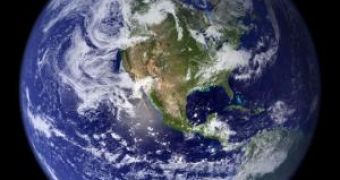The molten rock inside the planet's mantle is in continuous motion as heat is convected from the inner regions towards the outer ones, forming the so-called convection cells where the hot material is being pushed upwards and the colder one falls back down in the vicinity of the core. The motion of this material is exactly the force which drives the movement of plate tectonics, pushing and pulling against each other either to form individual continents or possibly a supercontinent, such as Pangea.
About four decades ago, it was first suggested that the motion of plate tectonics can reverse in repeating cycles over the period of several hundreds of millions of years, in what is now called the Wilson Cycle, named after the geologist J. Tuzo Wilson, who proposed this model.
Yet another model implies that, in fact, the continents are responsible for their own relative motions in relation to each other, as thick crust of solid rock traps heat and prevents the mantle from convecting any more material in specific regions. The ultimate result is the destruction of the existing convection cells and the formation of new ones, which would eventually reverse the relative motion of the plate tectonics.
A simulation recently carried out by physicists Bin Liu and Jun Zhang of the New York University in which they replicated the possible processes taking place inside the mantle and have a direct impact on the dynamics of plate tectonics. The experimental rig basically consists of a heated container filled with a viscous material. As the lower regions of the fluid start to heat up, a convective flow is established. To make the experiment more realistic, half of the bottom of the container was covered with nylon spheres.
The convective motion of the fluid eventually bundled all the spheres together and started moving to one side of the container, accordingly to the motion of the fluid. However, every couple of hours or so, the convective pattern would change and start pushing the spheres in the opposite direction.
Similarly to the model regarding the motion of plate tectonics, researchers believe that the uneven distribution of spheres across the bottom of the container determined uneven heat distribution which disrupted the original convective flow on the fluid and created new ones. Eventually, the new convection cells would suffer the same fate as the proceeding ones, because the system cannot establish a balance between temperatures throughout the whole surface of the floor.
The same effect applied to the plate tectonics, said the researching team, the nylon spheres being represented by areas in which heat builds up and can no longer be convected efficiently.

 14 DAY TRIAL //
14 DAY TRIAL //